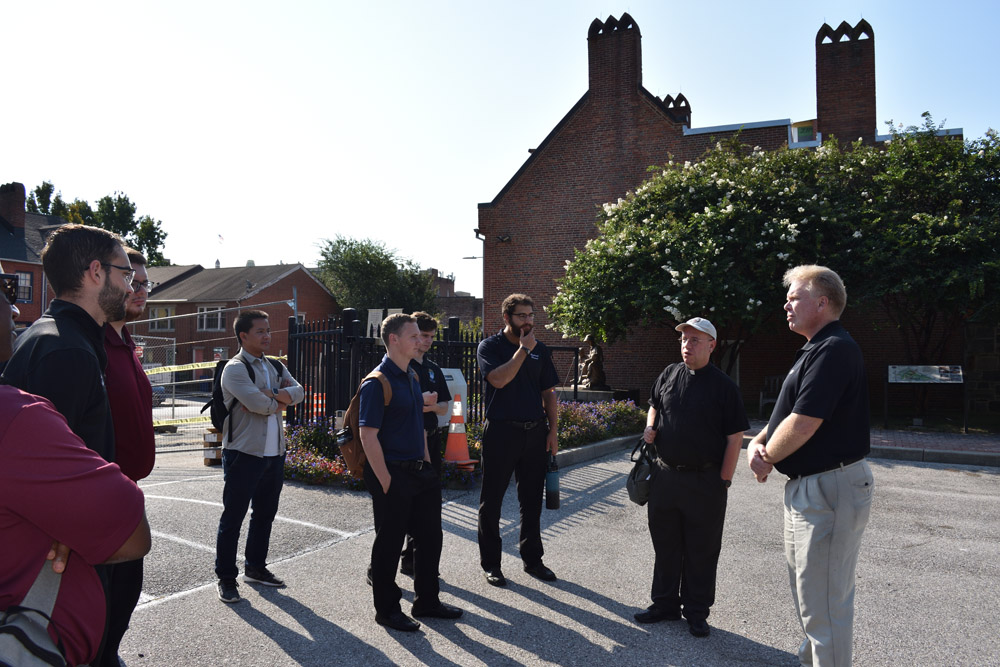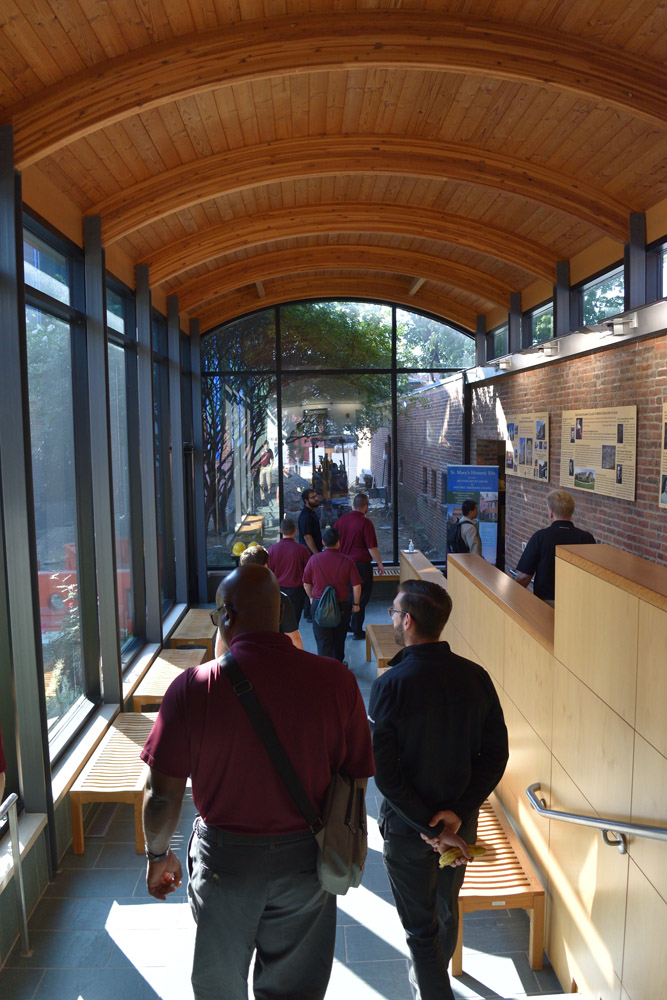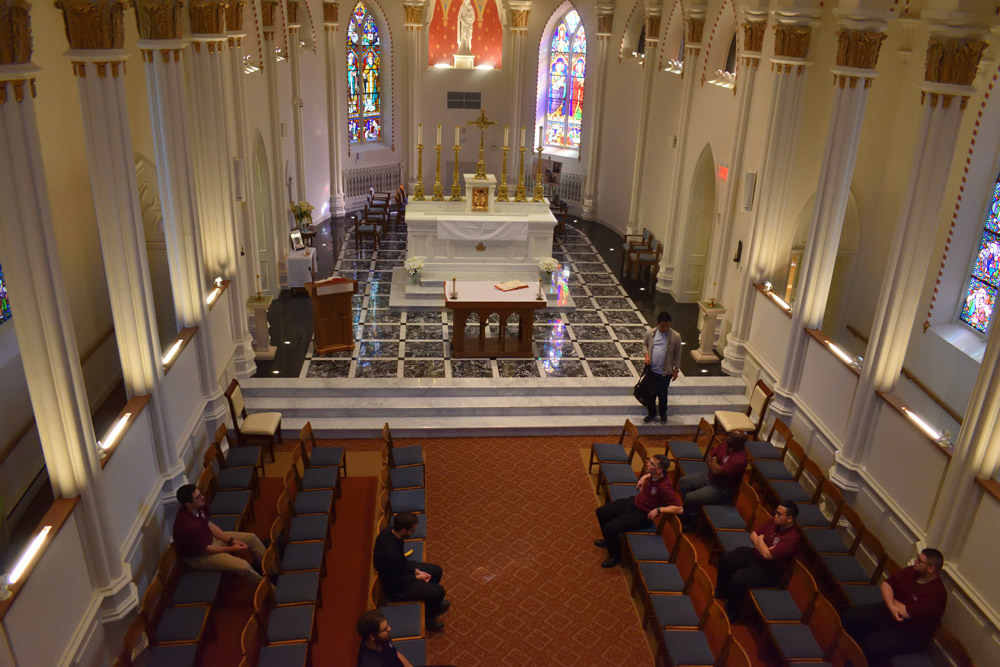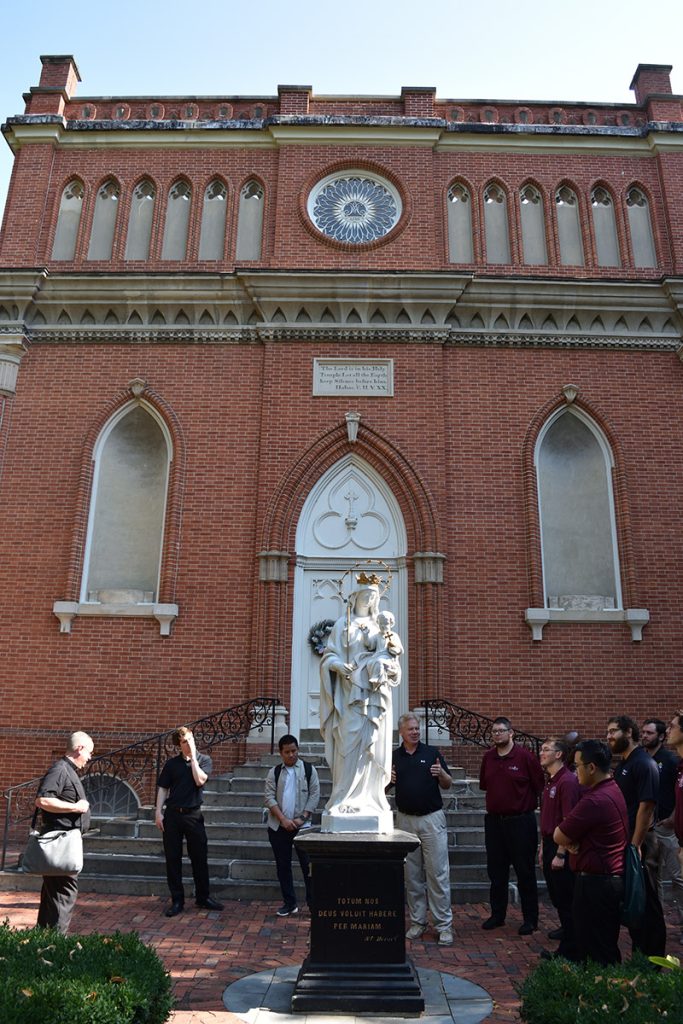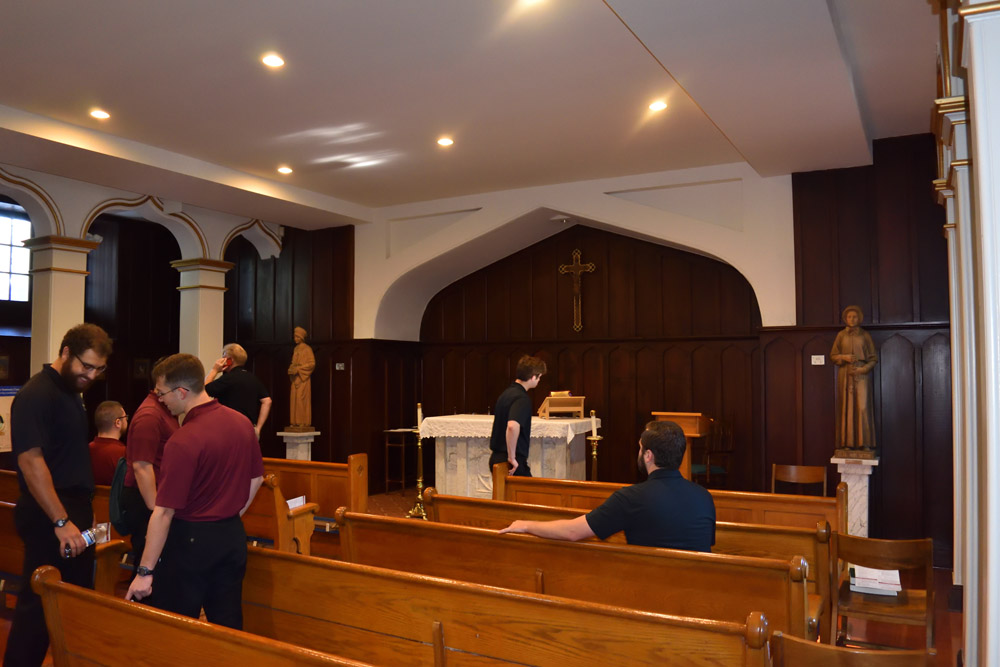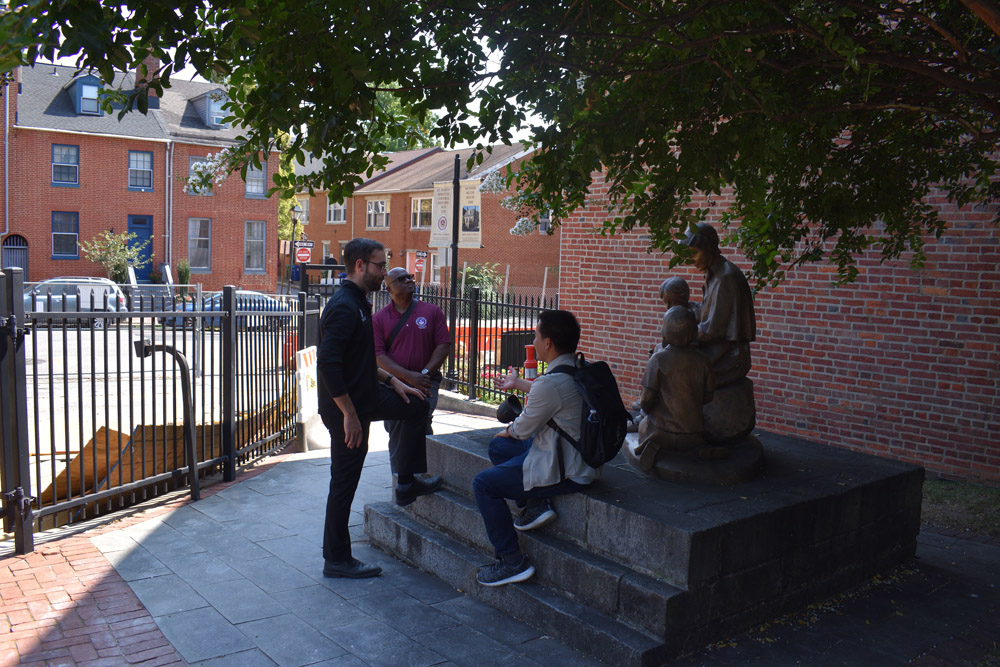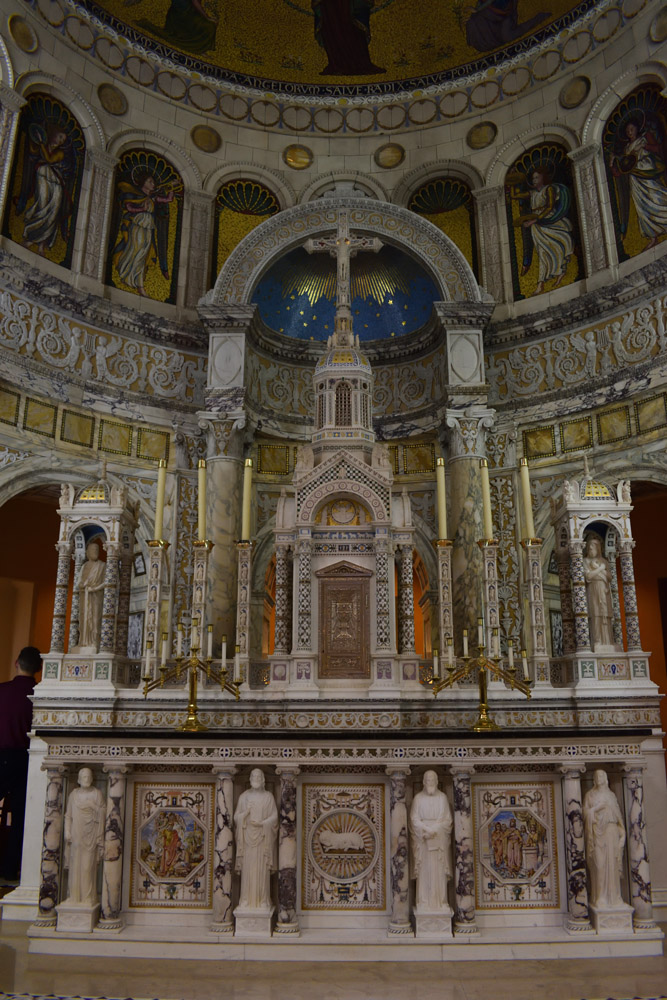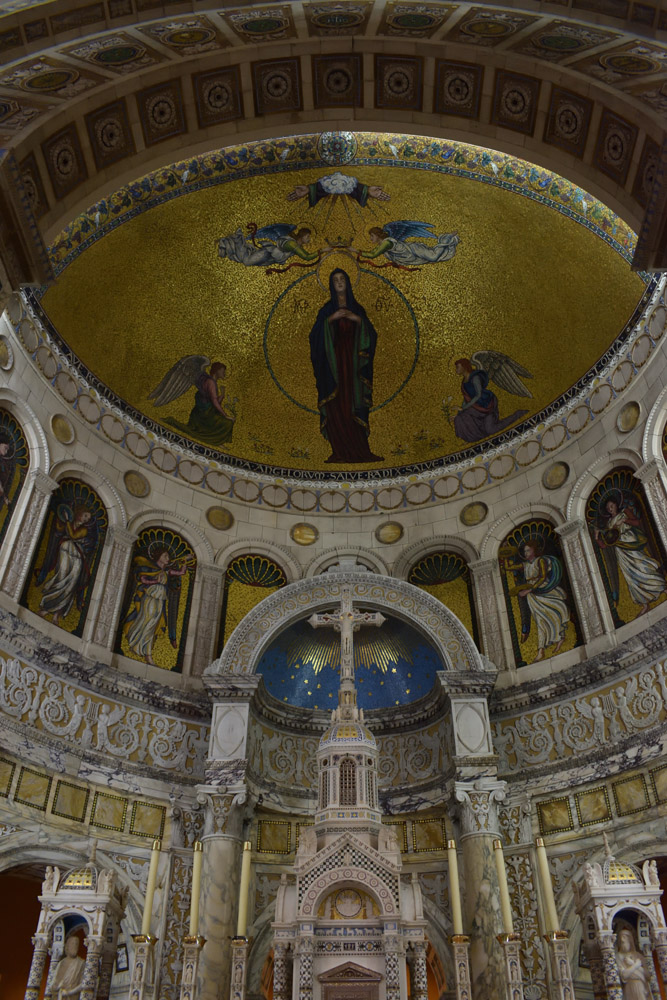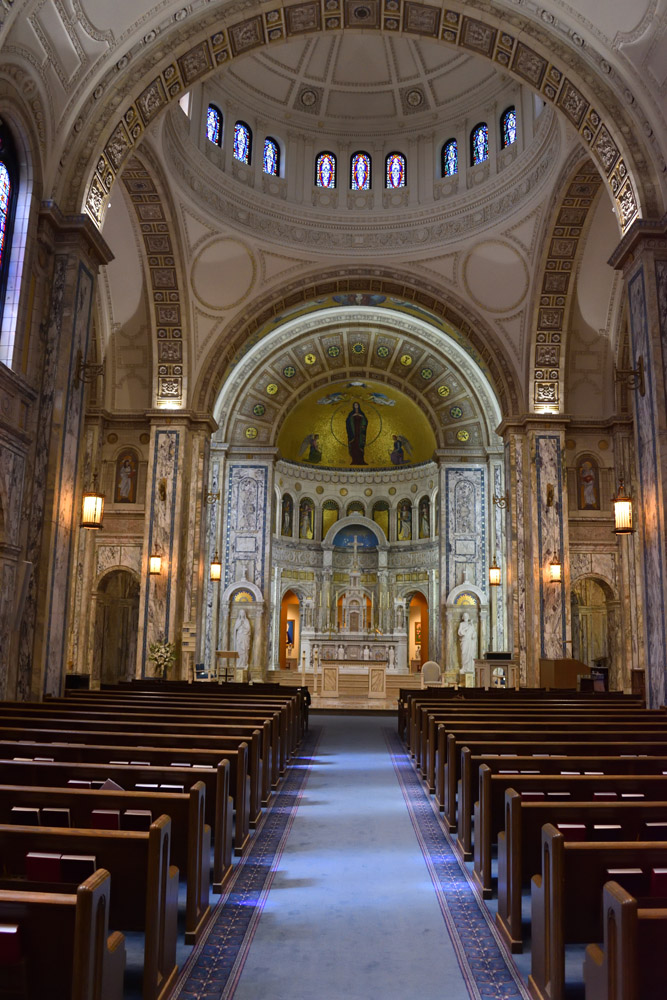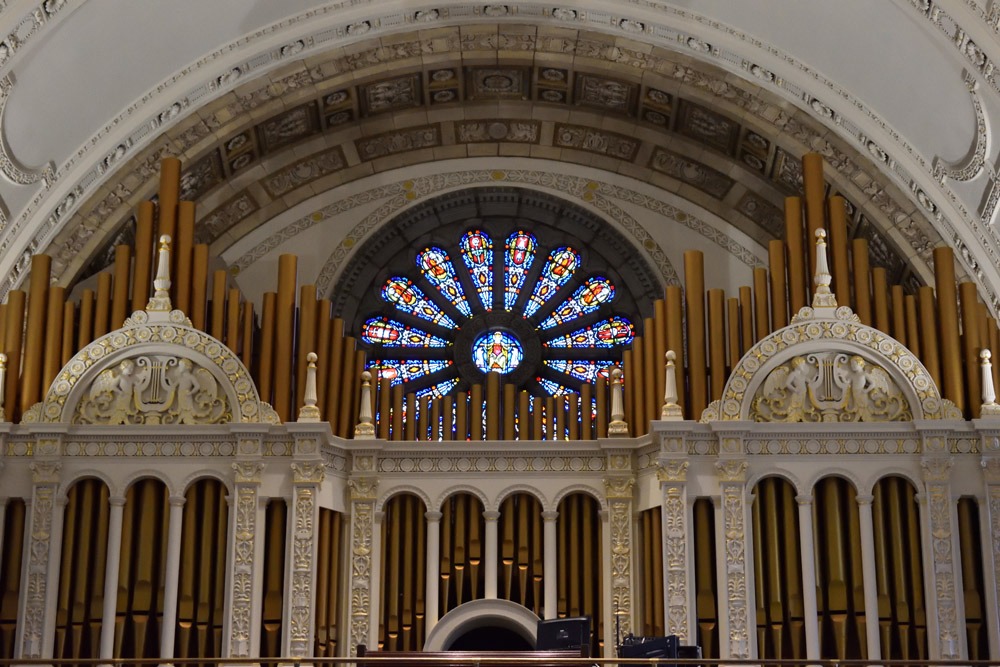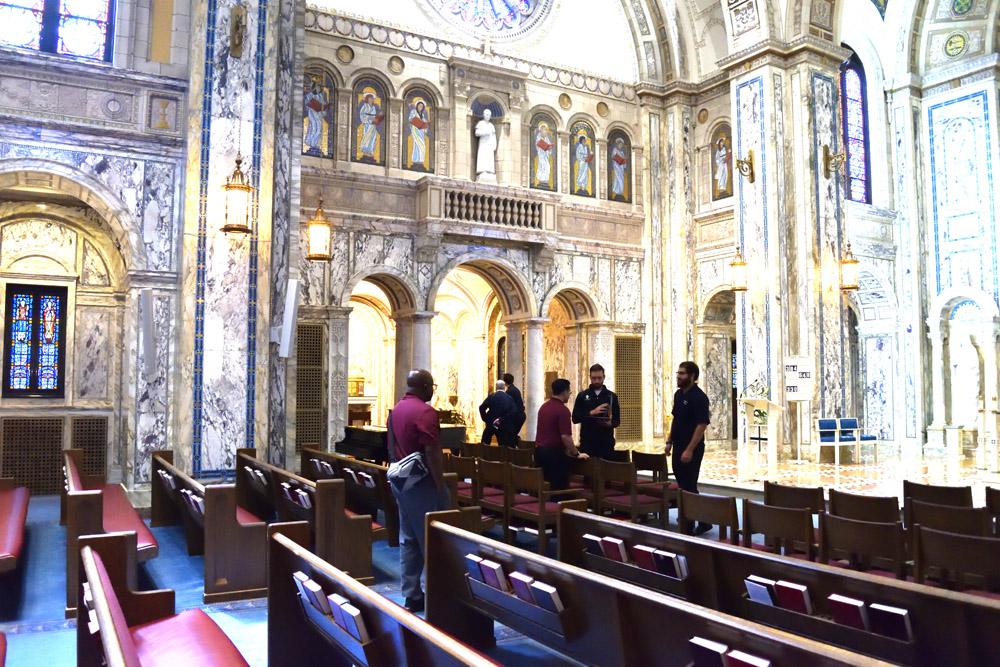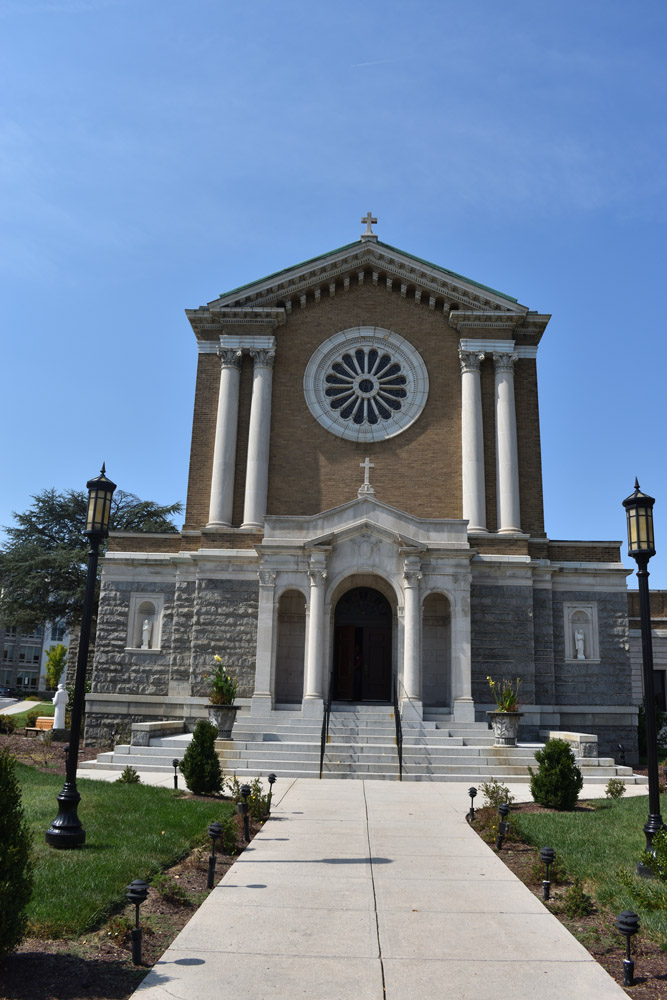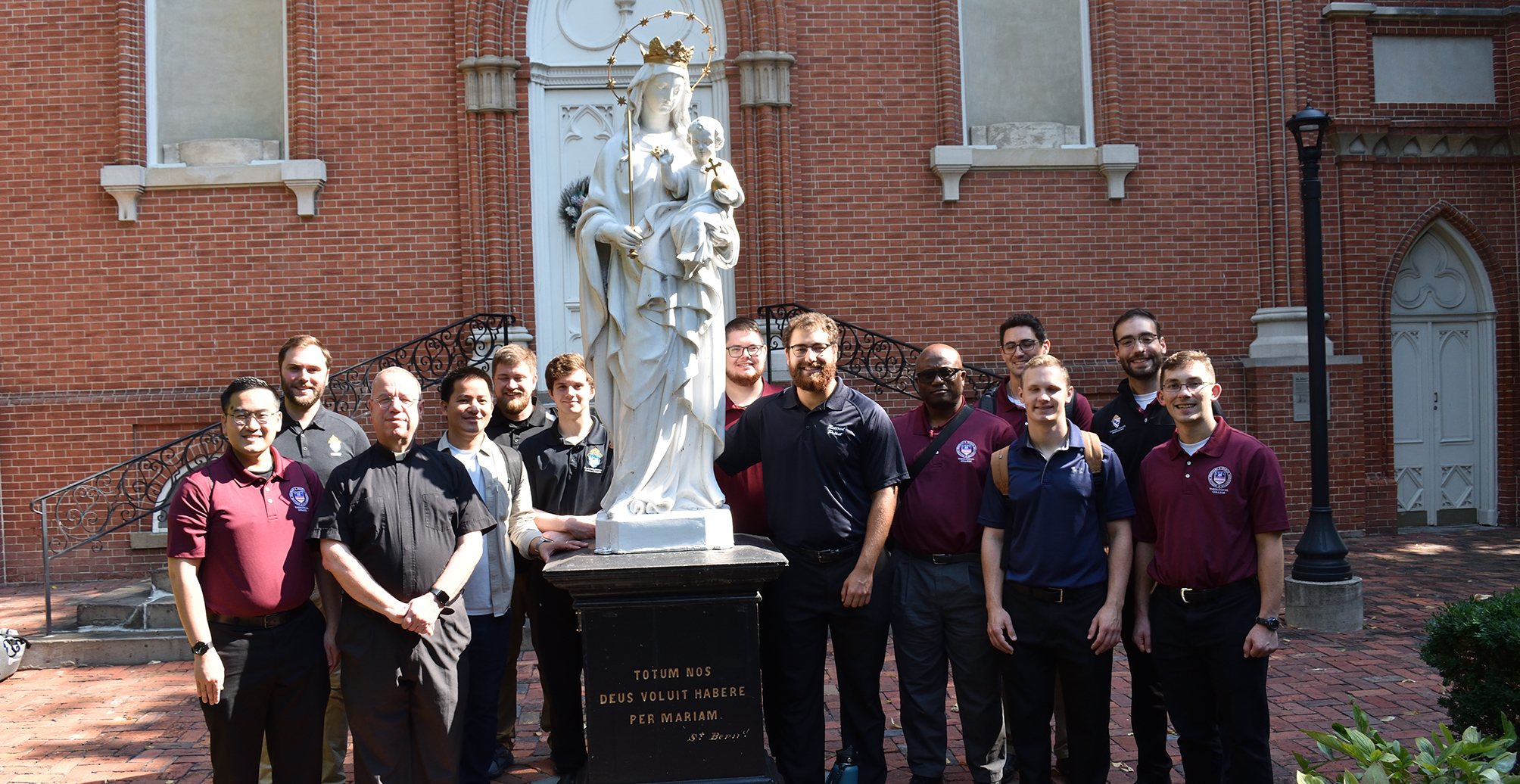
Recently, the seminarians and faculty new to Theological College embarked with Rector Bud Stevens on a tour of historic Sulpician sites in Baltimore, where the story of the American Province of the Society of St. Sulpice began. Father Bud explained the importance of such a pilgrimage: “This is not only an opportunity to visit historical Sulpician sites but an opportunity for our new seminarians to be aware that they are doing their work of discernment and formation in communion with men who have been engaged in the same process for over 200 years.”
Upon their arrival at Paca Street at St. Mary’s Spiritual Center and Historic Site, they participated in a Mass held at the Seminary Chapel, “Chapelle Basse” (lower chapel). Afterward, the Province’s development assistant, Mr. Blaine Carvalho, facilitated the tour of the Paca Street sites. In 1791, at the invitation of Bishop John Carroll, the Sulpician Fathers arrived in Baltimore and settled on this very site to begin the first Roman Catholic seminary in the United States. Bishop Carroll knew of the Sulpician Fathers’ unique priestly formation ministry in France, and he invited them to come to serve the need for guided priestly formation in this new land. The seminary, founded that same year, was initially located in a building on the southeast corner of the property known as the One Mile Tavern. With the help of Bishop John Carroll and others, the Sulpicians were able to purchase additional property adjoining the One Mile Tavern and build St. Mary’s College and Seminary.
The pilgrims then visited the Mother Seton House, next door to the seminary. Elizabeth Ann Seton, the first American-born woman canonized by the Catholic Church, came to Baltimore from New York on June 16, 1808, the day of the dedication of the Seminary Chapel. She was a recently converted Catholic widow and mother of five whom the Sulpicians invited to open a boarding school for girls, establishing the first parochial school in the United States. She described the house, built in 1807, as “a neat, delightful mansion, entirely new…in the new French style of folding windows and recesses.”
The next stop on the tour was the magnificent Basilica of the Assumption, also known as the Baltimore Basilica, two blocks away. The first Catholic cathedral built in the United States, it was constructed between 1806 and 1863 using a neoclassical design by Benjamin Henry Latrobe (1764-1820), America’s first professionally trained architect and Thomas Jefferson’s architect of the U.S. Capitol. The Basilica was blessed and opened for use on May 31, 1821, and renovated to stunning effect in 2006.
Taking a bus to Our Lady of the Angels Chapel in Catonsville, the group was met by the pastor, historian Father Leo Larrivee, P.S.S. The chapel was built in 1913 as part of the new St Charles Seminary in Catonsville (the original chapel, built in 1866 as part of St. Charles College in Ellicott City, was lost in a fire in 1911). Father Larrivee describes this wonder: “Our Lady of the Angels is a magnificent example of Italian Renaissance architecture. Adorned with intricate mosaics, Carrara marble, and breathtaking stained-glass windows, the chapel is a veritable trove of classic Christian artwork. Steeped in Maryland’s history, and rich in detail, Our Lady of the Angels is a true hidden treasure.” And indeed, saying Afternoon Prayer there was a fitting conclusion to a blessed day together.

